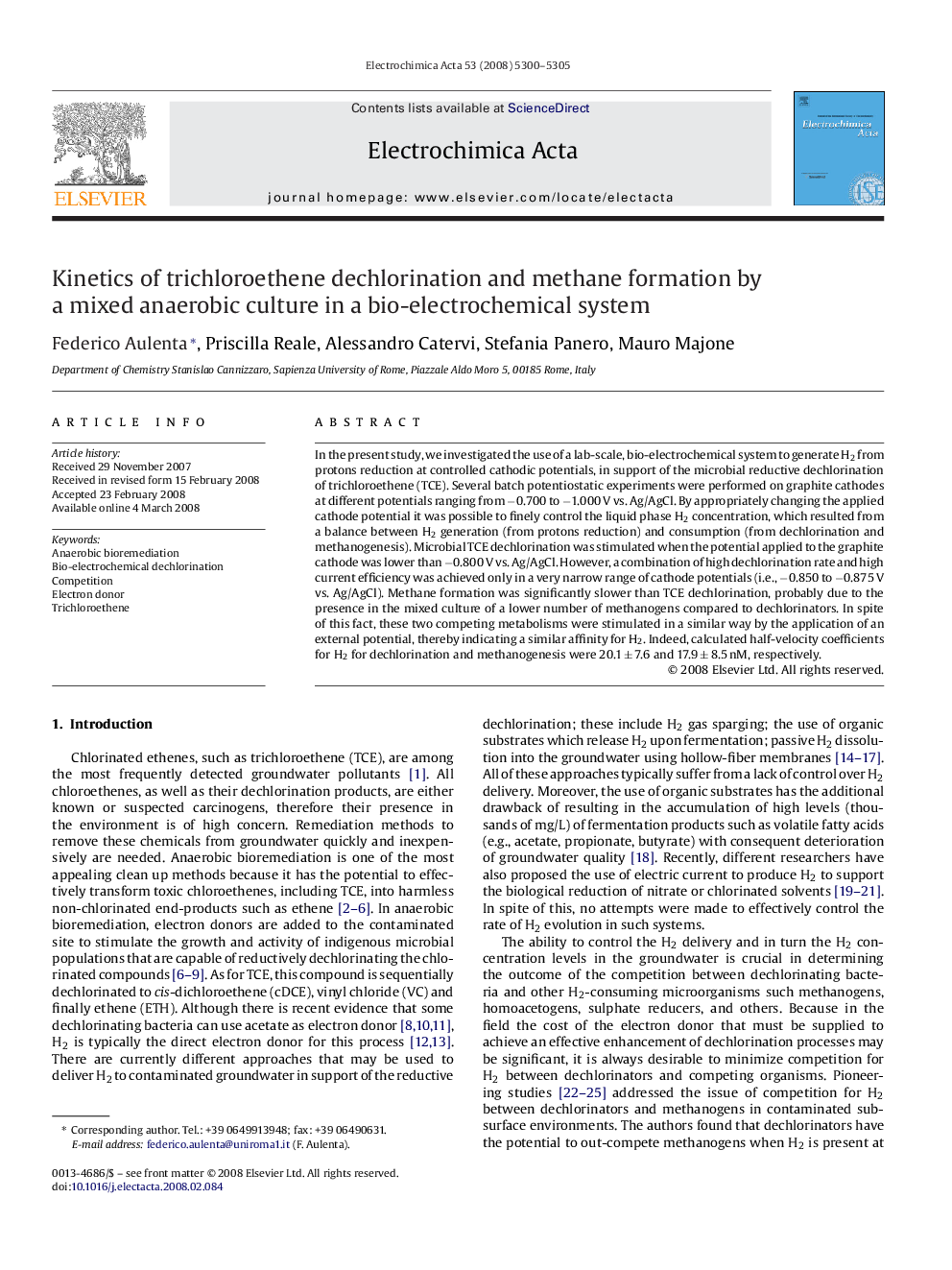| Article ID | Journal | Published Year | Pages | File Type |
|---|---|---|---|---|
| 192290 | Electrochimica Acta | 2008 | 6 Pages |
In the present study, we investigated the use of a lab-scale, bio-electrochemical system to generate H2 from protons reduction at controlled cathodic potentials, in support of the microbial reductive dechlorination of trichloroethene (TCE). Several batch potentiostatic experiments were performed on graphite cathodes at different potentials ranging from −0.700 to −1.000 V vs. Ag/AgCl. By appropriately changing the applied cathode potential it was possible to finely control the liquid phase H2 concentration, which resulted from a balance between H2 generation (from protons reduction) and consumption (from dechlorination and methanogenesis). Microbial TCE dechlorination was stimulated when the potential applied to the graphite cathode was lower than −0.800 V vs. Ag/AgCl. However, a combination of high dechlorination rate and high current efficiency was achieved only in a very narrow range of cathode potentials (i.e., −0.850 to −0.875 V vs. Ag/AgCl). Methane formation was significantly slower than TCE dechlorination, probably due to the presence in the mixed culture of a lower number of methanogens compared to dechlorinators. In spite of this fact, these two competing metabolisms were stimulated in a similar way by the application of an external potential, thereby indicating a similar affinity for H2. Indeed, calculated half-velocity coefficients for H2 for dechlorination and methanogenesis were 20.1 ± 7.6 and 17.9 ± 8.5 nM, respectively.
